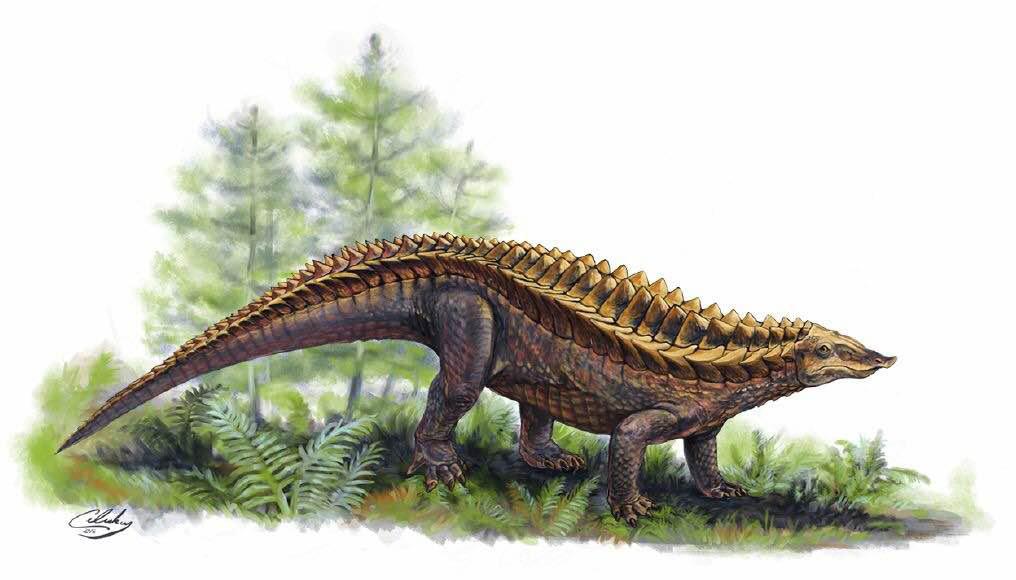Appalachian State’s geology and art departments are teaming up to build a life-sized model of Gorgetosuchus pekinensis. The idea was first conceived in early February and started moving forward after they received the University Research Council grant at the end of April.
“Gorgetosuchus is an aetosaur, an armored reptile related to but more primitive than crocodiles,” Dr. Andrew B. Heckert, professor in the department of geology, said. “Thus, it is not technically a dinosaur, but instead an extinct fossil reptile that would have lived at the same time as the earliest dinosaurs during the Triassic approximately 230 million years ago.”
The model is slated to be finished by the end of the semester. The URC grant covered most of the initial costs, but funds still need to be raised for the bronze casting.
Heckert was the leader of the research team that named Gorgetosuchus and said that so far it has only been found in North Carolina.
Lauren H. Waterworth, a professor in the geology department, was the mastermind behind the project. Given how close to home Gorgetosuchus was found it was the perfect fit for the project, she said.
“On a whim one day, I started looking at videos online of dinosaur reconstructions and how they are built,” Waterworth said. “I thought it would be awesome to have one here in the Rock Garden and, because Dr. Heckert works on Aetosaurs, that made the most sense.”
Waterworth contacted Travis Donovan, visiting assistant professor of sculpture in the art department, hoping that he would be able to provide them with some help moving the idea forward.
Donovan said he offered to take it on as a class project.
“Everything that is involved with this fabrication process already fits nicely into our curriculum in the sculpture classes of the department of art, plus I saw this as a great opportunity for the students to grapple with real-life challenges and problem solving skills that are involved in actual professional design collaborations,” Donovan said.
Donovan said the process to build the Gorgetosuchus began with students creating drawings done proportionally to scale, using them for reference during the modeling process.
“As a paleoartist, I’m kind of at the transition point between the science and the art,” Matt Celeskey, exhibition designer at Museum Resources Division in New Mexico, said. “Consulting with Andy, I took the fossils that we know and compared them to similar animals to reconstruct the skeleton and life appearance of Gorgetosuchus.”
Celeskey said he has known Heckert for many years, from when they worked at the New Mexico Museum of Natural History and Science. In 2010, they collaborated on a reconstruction of Typothorax, a New Mexican relative of Gorgetosuchus, based on a well-preserved skeleton that Heckert excavated with a field crew of App State students.
“When he approached me about doing the same with Gorgetosuchus, I was thrilled to have the opportunity to bring another aetosaur back to life,” Celeskey said.
The students are also incorporating newer digital technologies to generate 3D rendered and printed models for reference, Donovan said.
“I also love that this project can benefit so many people,” Waterworth said. “We are learning more about Aetosaurs by studying this one so closely, art students are getting the opportunity to hone their technical and professional skills and once we have the final sculpture, it will become part of the geology department’s science and education outreach program.”
Heckert said hopefully, when people see the reconstruction it will give them a sense of how different the North Carolina landscape would have looked in the Triassic.
“These are collaborations that tickle multiple parts of the brain and allow many of us to excel at what we love and explore other things that have always interested us, but that don’t typically find their way into our normal research,” Donovan said. “This is a great opportunity for the students to recognize all the opportunities for research available to them and connect that research with multiple communities in the professional world.”
Story by: Halie Hamilton, News Reporter
Illustration by: Matt Celeskey

